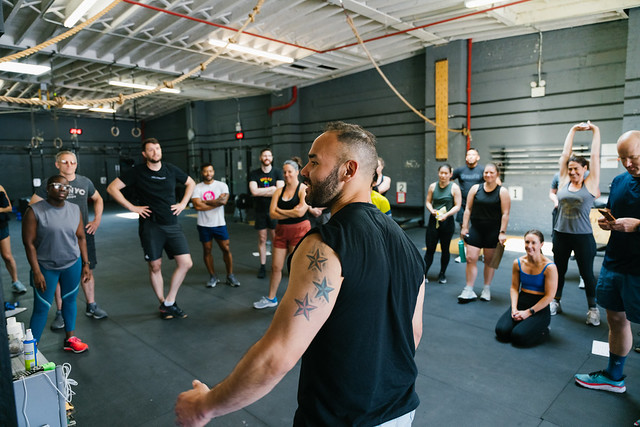Majoring in Elementary Education: A Conversation with Emily
I had the opportunity to reach out to a student, Emily Sanders, who is majoring in elementary education at the University of Minnesota. We were able to talk for a while about different things, but the real conversation didn’t start until I started asking these questions. I was able to learn about the benefits and challenges of being and elementary school major student and many other things.
Q: What’s your name and what college do you go to?
A: Hello, my name is Emily Sanders, and I’m a student at the University of Minnesota.
Q: What’s your major?
A: I’m majoring in Elementary Education.
Q: What made you want to become an elementary school teacher?
A: I’ve always loved working with kids. I grew up babysitting and volunteering at summer camps, so it just felt natural.
Q: That’s awesome
A: I also had a couple of amazing elementary teachers who really inspired me. Seeing how they made learning fun and supported their students emotionally made me realize how impactful this role can be.
Q: Aw, yes. Also, Is the schooling for that major what you expected, and why?
A: Honestly, yes and no! I knew it would involve a lot of coursework on child development and teaching strategies, but I didn’t-I didn’t realize how much hands-on classroom experience we’d get through student teaching placements. It’s been challenging, but I’ve learned so much by actually being in a classroom and working with real students.
Q: Cool! What has been the most challenging part?
A: Definitely managing time. Balancing coursework, lesson planning for student teaching, and keeping up with everything can get pretty hard. Also, learning how to adapt to each student’s, um, unique needs and challenges has been a a challenge. it’s something you can’t fully prepare for until you’re in the classroom.
Q: What’s been your favorite part of the program so far?
A: Definitely the student teaching placements! Getting to work with kids in real classrooms has been such a rewarding experience. It’s amazing to see the progress they make over time and to know that I’ve played a small role in helping them learn and grow.
Q: What advice would you give to someone considering this major?
A: I’d say go for it, but be prepared to work hard! Teaching is one of the most rewarding careers out there, but it takes a lot of dedication and patience. Getting involved in volunteer work or part-time jobs with kids before starting the program can also help you figure out if it’s the right fit for you.
Q: Well, thank you for taking the time to answer these questions and I wish you the best of luck moving forward.
A: Thank you as well!

(Annie Hippen)
A Look Inside Of A Successful Classroom
Teaching is all about creating a welcoming and exciting space where students feel inspired to learn. With the right mix of creativity, encouragement, and structure, you can make every day in the classroom meaningful and fun. This guide offers simple, practical ideas like hands-on activities, group projects, and positive feedback that can help you connect with your students and bring out the best in them.
Interactive Learning
- Engage students through hands-on activities such as science experiments, DIY crafts, or physical games to actively involve them in the learning process.
- Utilize technology, including educational apps, interactive whiteboards, or virtual reality tools, to make lessons dynamic and visually appealing.
- Host interactive discussions or role-playing activities where students can simulate real-world scenarios or historical events.
Differentiated Instruction
- Customize lesson plans with varying levels of difficulty, allowing advanced learners to deepen their knowledge while offering support to those who need more help.
- Use multimodal teaching strategies, such as combining visuals, audio, and kinesthetic activities, to address different learning preferences.
- Implement flexible grouping, rearranging students for activities based on their abilities, interests, or learning objectives.
Positive Reinforcement
- Regularly recognize effort, improvement, and achievements through verbal praise, certificates, or showcasing students’ work to the class.
- Establish reward systems, such as earning points, stickers, or privileges, to promote positive behavior and engagement.
- Create a supportive environment by encouraging students to celebrate each other’s successes.
Storytelling and Visuals
- Use engaging stories, personal anecdotes, or historical narratives to simplify complex concepts and make them relatable.
- Include multimedia elements, such as pictures, diagrams, animations, or videos, to enhance visual understanding.
- Connect lesson content to students’ personal interests, cultural backgrounds, or real-life experiences.
Scaffold Learning
- Break down challenging tasks into manageable steps, providing clear instructions and examples along the way.
- Offer initial support, such as hints, guided practice, or templates, and gradually reduce assistance as students gain confidence.
- Encourage reflection and self-assessment, helping students evaluate their progress and set achievable goals.
Classroom Management
- Develop and communicate clear rules, routines, and expectations to create a structured and respectful learning environment.
- Implement engaging transitions, like short brain breaks or interactive questions, to maintain students’ focus between activities.
- Use visual and auditory signals, such as hand gestures, claps, or chimes, to grab students’ attention and ensure smooth classroom flow.

(Annie Hippen)
The Ideal Teacher
Miss Honey, the gentle and empathetic teacher in Roald Dahl‘s Matilda, is an excellent example of what the ideal teacher could be. She is gentle, firm in a subtle way, and she truly believes in her pupils. To Matilda, she is not merely a teacher. She is a ray of hope, showing what school could be like in a child’s imagination. Miss Honey‘s past is not easy, though. She was brought up under the tyrannical dominance of her intimidating aunt, Miss Trunchbull, but she never became hard and cruel despite this. She is a teacher because not for glory or money, but because she feels teaching can transform. She does not treat her classroom as merely a place of learning, but as a haven.
When Matilda meets Miss Honey, she‘s surprised by how kind her teacher is. Dahl portrays her as shy and timid but somehow each kid just loves her. The kindliness makes her stand out in Matilda‘s opinion, who‘s used to being treated badly, especially by her cruel parents. Miss Honey recognizes Matilda‘s incredible brilliance and cares for her in a way no one else does. While Matilda’s loud and mean father thinks children should be heard no more, Miss Honey listens to her. She notices what books Matilda loves most and realizes that they are the key to freeing her. This act of trust alone rewrites Matilda‘s fate. Miss Honey backs up Matilda‘s education not alone. She fosters her love and gives her what she does not get at home. She’s more than a teacher; she’s almost like a mother figure for Matilda. When she tells Matilda “You’re not alone,” it’s a powerful reminder that she’s there for her no matter what.
Miss Honey’s gentle and caring nature makes her the kind of teacher everyone wishes they had, even though in the real world, it’s not always easy to be like her. Modern teachers face every kind of problem, like big classes, limited resources, and exams, that can make it hard to compete with Miss Honey.
In spite of, however, the imperfections of Miss Honey, she stays with us because she embodies what we hope to see in teachers: kindness, fairness, and faith in every pupil’s potential. Her pedagogy and unassuming conviction lead us to consider what teaching can be when it is at its best. As much as Matilda, Miss Honey‘s life is transformed at the conclusion of the novel. After Miss Trunchbull‘s defeat, Miss Honey and Matilda coexist in peace and happiness. Miss Honey is the loving guardian whom Matilda had been in need of, proving how much they both saved each other.
Miss Honey’s legacy is not simply that she is a great teacher;it‘s that she is a light of hope. She teaches us how much goodness, even the smallest and kindest goodness, can change lives. In a world where there are so many Trunchbulls, Miss Honey is the light of hope that reminds us of goodness in human relationship. Maybe Miss Honey is not so much an ideal of what the teacher should be, but rather an ideal of what education can be at its best. Her impact may seem impossible to achieve as a teacher, but it‘s embedded very deeply in our hearts. And as Matilda suggests, “sometimes you have to be a little bit naughty” to battle the evil things in the world, but individuals such as Miss Honey can actually make things better to begin with.








